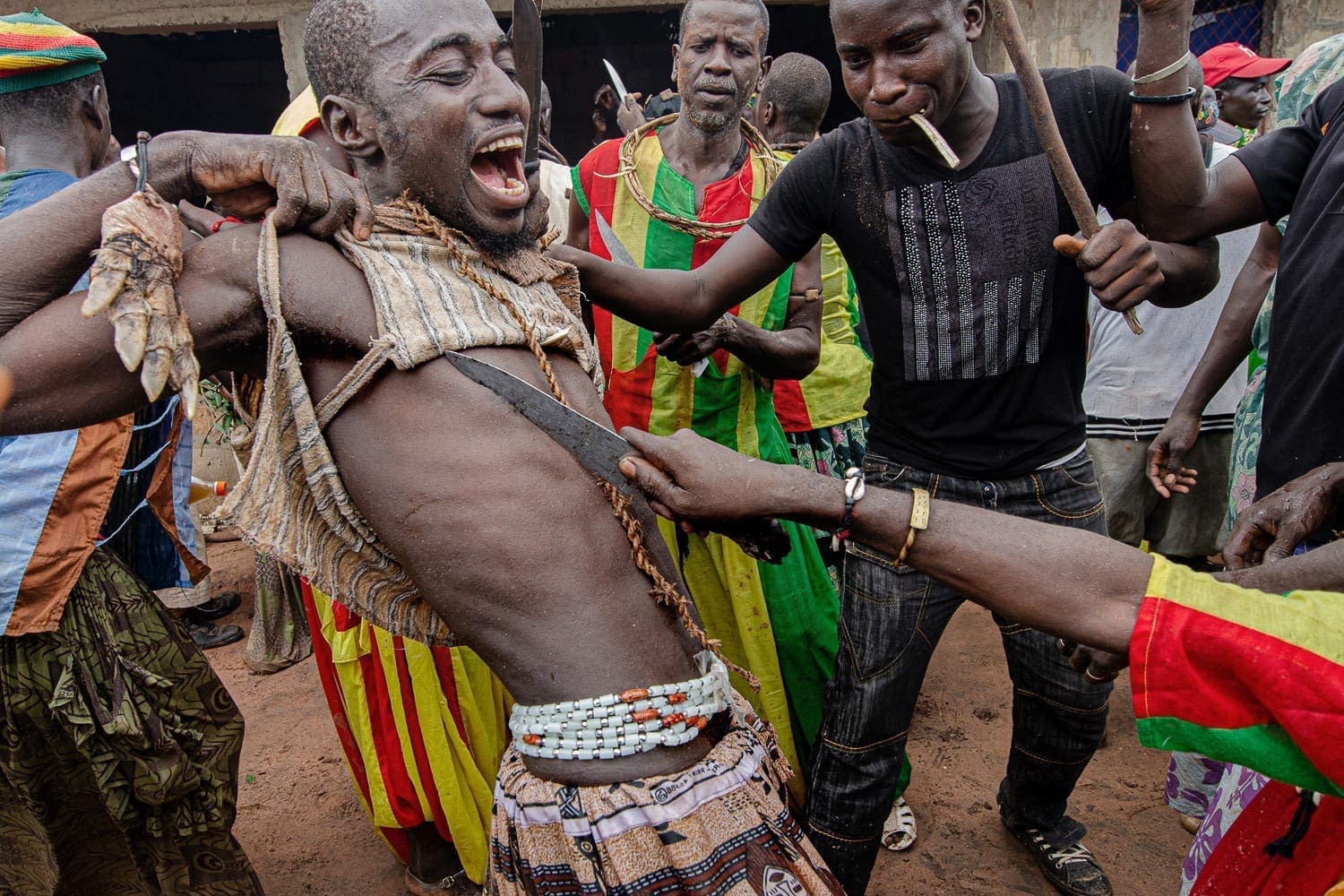Every thirty years in the sacred forests of Casamance, south of Senegal, hundreds of young diola become men through the initiation of the Boukout. Children and kids, living all over the country and the world, are called back to their home village to undergo the boukout ritual, rediscover their roots and learn the secrets of their culture.
Hundreds of children and young people, called to order, pour into the village to prepare for initiation: stripped of all the goods of modernity, they submit to the prohibitions and rules of tradition, passed down through the centuries by ancestors to the village sages. The young cambachs undergo the ritual of shaving and blessing performed with sacred herbs, prepared according to animist tradition and blessed in the manner of modern monotheisms. And as they perform the traditional dance, learned months earlier, the already-initiated men astound everyone with exhilarating demonstrations of courage: thanks to the mystical power of a secret root from the sacred forest, they attempt to wound themselves with long, sharp blades on various parts of the body that remain unharmed. The cambachs will then enter the sacred forest, where they will learn the mystical secrets of the forest and their own culture, which will finally make them men.
And which, once they leave, they will never, ever reveal.
At one time the boukout was held every ten years, and the initiates stayed in the forest for up to three months. Today, given the immense cost to families and the village of the ceremony, the emigration of young people and the higher rate of schooling of children, the cadence of the boukout has lengthened, and the time spent in the sacred grove has been reduced to two weeks. As the initiation is binding on every diola man, today the sacred grove remains open for up to a year, to allow time for latecomers, who may have migrated off the continent, or their own children (including mestizos), to be able to undergo the ritual of diola culture and its traditions, which remains the common denominator despite the religious differences of its members, whether Muslim or Christian.
In this sense, it is a vehicle of values of tolerance and equality, but also, like all initiation rituals, of humility, respect for rules, and, in this case, respect for the environment.

I was lucky enough to witness, together with photographer Alida Vanni, the boukout in 2013 in the village of Kartiak. The thrill and fascination lay in experiencing first-hand how a traditional culture adapts and flexibly models itself, to survive, in the context of a globalised world; in discovering with pleasure how much this traditional culture is despite everything still alive and, above all, respected; and finally, and above all, in demystifying that imagery of ‘Africans dancing in circles and playing the drums during their tribal rituals’: the fact of grasping and ‘living’ the meaning of the ritual also allows me to recognise the values of my own culture, and to understand how they are differently conveyed, consistently with each context. That demystification, once again, happens by living reality, with people; and the declique arrives perhaps when you recognise your neighbour from Dakar, until the day before in a t-shirt and jeans speaking the same language as you, dancing in front of you with an ox horn hat on his head.
Here, then, are the texts and images on the Casamance diola boukout: allow yourself the pleasure of being amazed and fascinated, without judgement. In short, just have a good boukout.

